Ahem, Ok, I guess I have some ‘splaining to do here. Some time ago I wrote this post for 35mmc, in praise for expensive outsourcing of film development and scanning. I wrote it because I wholeheartedly believed what I said. And I still think that the time saved by having a lab scan your film is invaluable.
But then along came KJ Vogelius with his wonderfully detailed post about his scanner…. and doubt crept into my mind. Home scanning has it’s advantages!
Why do we shoot film? Well, we like the cameras, the feel of film, the look of film and the smell of Rodinal in the morning…. But we do it also because we want to keep control over our pictures. And it’s true, outsourcing the scanning process is not always entierly in favour of keeping control!
In short, I went and ordered (again) a Plustek Opticfilm 8100, not the 8200 because I prefer B&W and the infrared cleaning features don’t work on B&W film…. and what’s more, the 8200 is about 100€ more expensive. Of course I bought it from Amazon as I want to test if this really works for me this time. If not I can send it back…. sorry Amazon 😉
I scanned some of my negatives that were processed by MeinFilmLab some time ago and here I want to give you my results. Always keep in mind that a B&W film, developed and scanned by my lab at 3600 x 5400 dpi is 19€ (there are lesser resolutions for a little less money available…), not counting postage to the lab. This can weigh in heavily on the result of the comparison.
I scanned at a resolution f 3600dpi on the Plustek – I compared with the maximum resolution of 7200 and as there seems to be a very slight advantage, the file sizes are HUGE (400Mb for a color scan…). Also I scanned using Vuescan which I think is quite old fashioned, but excellent! I’ll try Silverfast (once again) but I detested it’s cumbersome interface the last times I used it and I don’t think this will change.
Mind you, the Opticfilm scans have NOT been sharpened. And these examples are processed quite quickly as I wanted to submit this comparison and get your feedback.
Here we go!
First, the cover photo for my former post, ‘DO’. Here are both versions, let’s check them out. Of course, it’s hard to get exactly matching colours. I tried as best as I could.
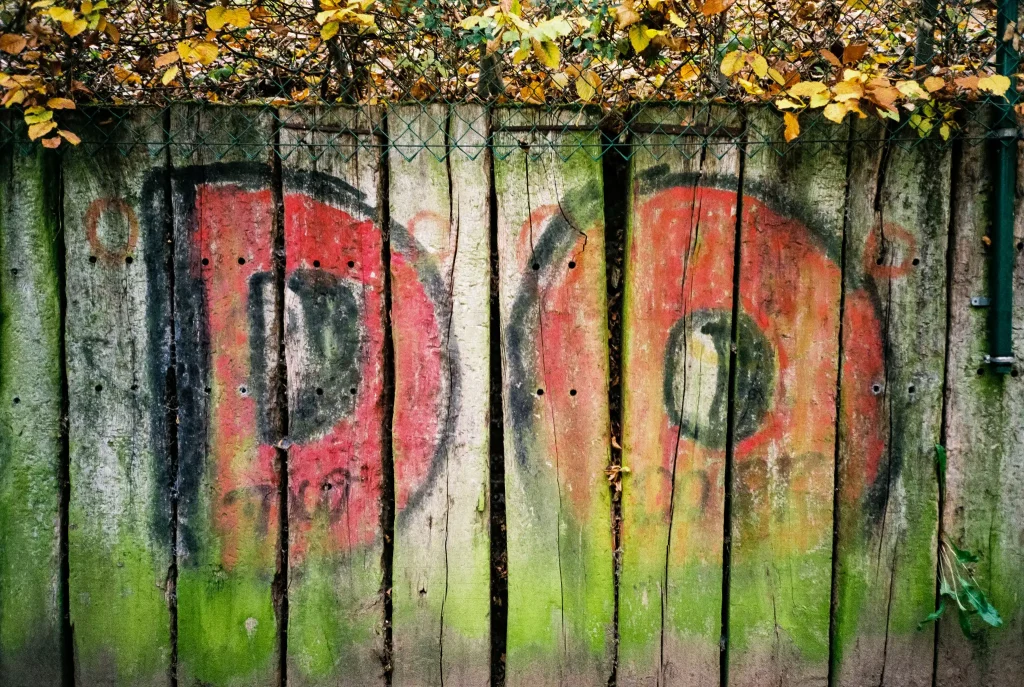
Plustek scan – not matching colours, but the overall sharpness is very much OK and it looks pleasing to me. I might go back to the spot to check the real colours of the scene….
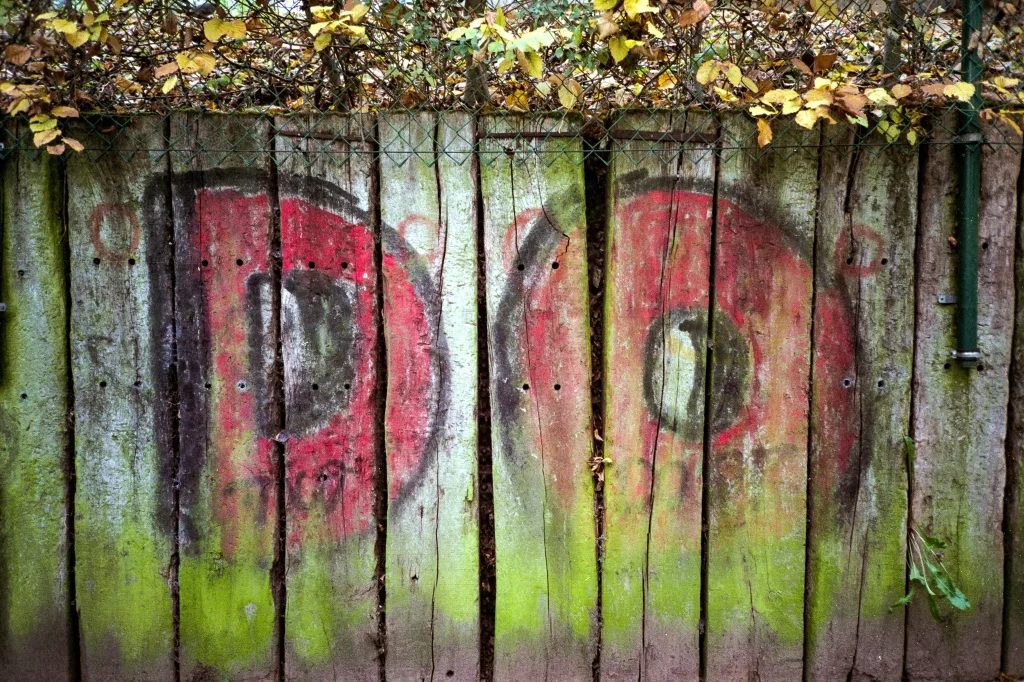
And I tried Silverfast once more, and I must say that I am impressed with it’s color rendition! Handling is still sh..t of course.
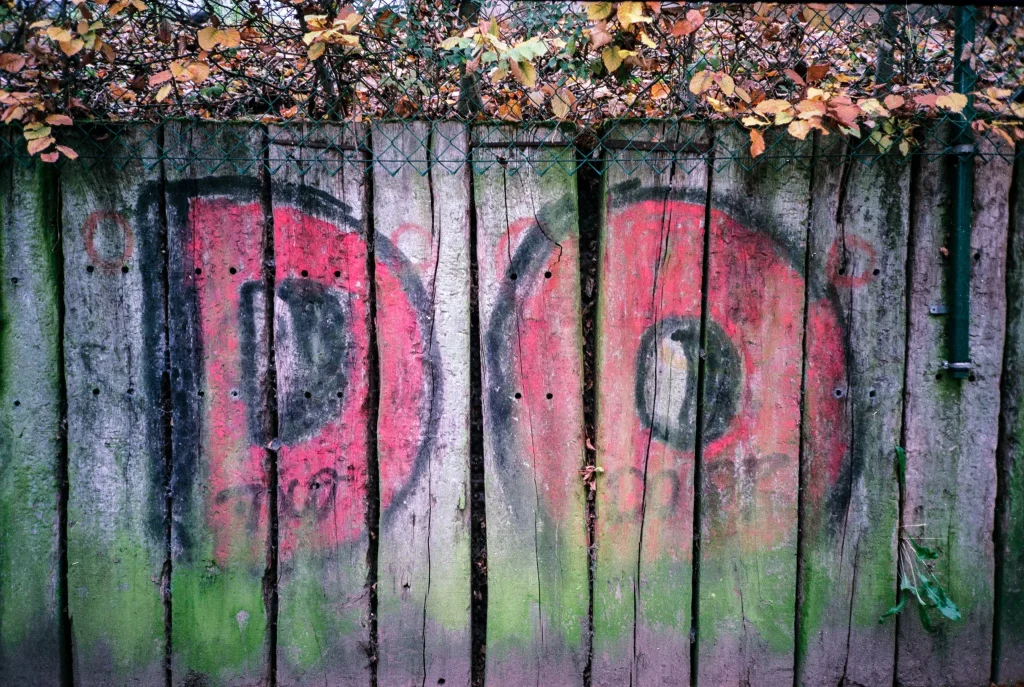
‘The Shed’ had an obvious magenta cast to it in the lab scan.
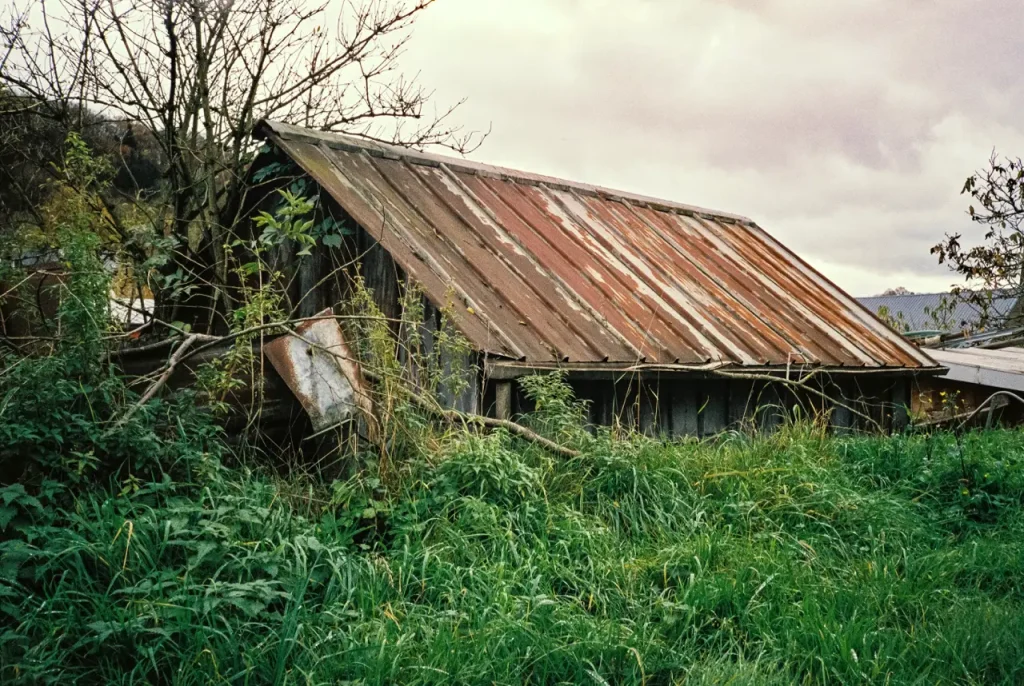
The Opticfilm scan has much more natural looking color, though a bit less flashy and perhaps some light yellowish cast…. nothing you can’t change in LR. A bit of work still required here. Resolution seems very good and much less sharpening artefacts.
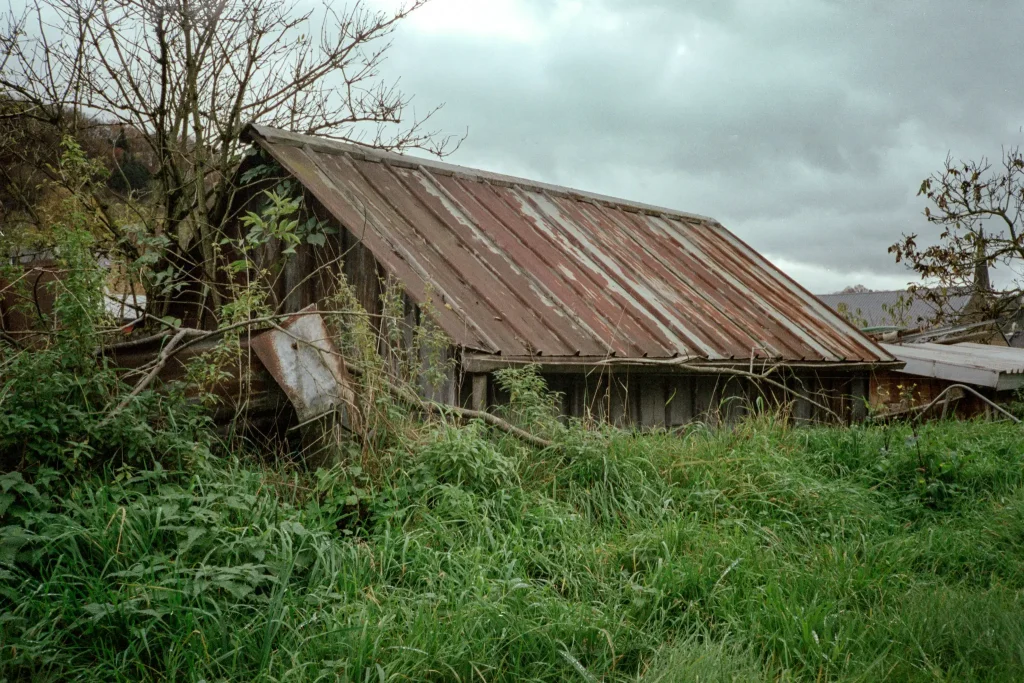
And the Silverfast version:
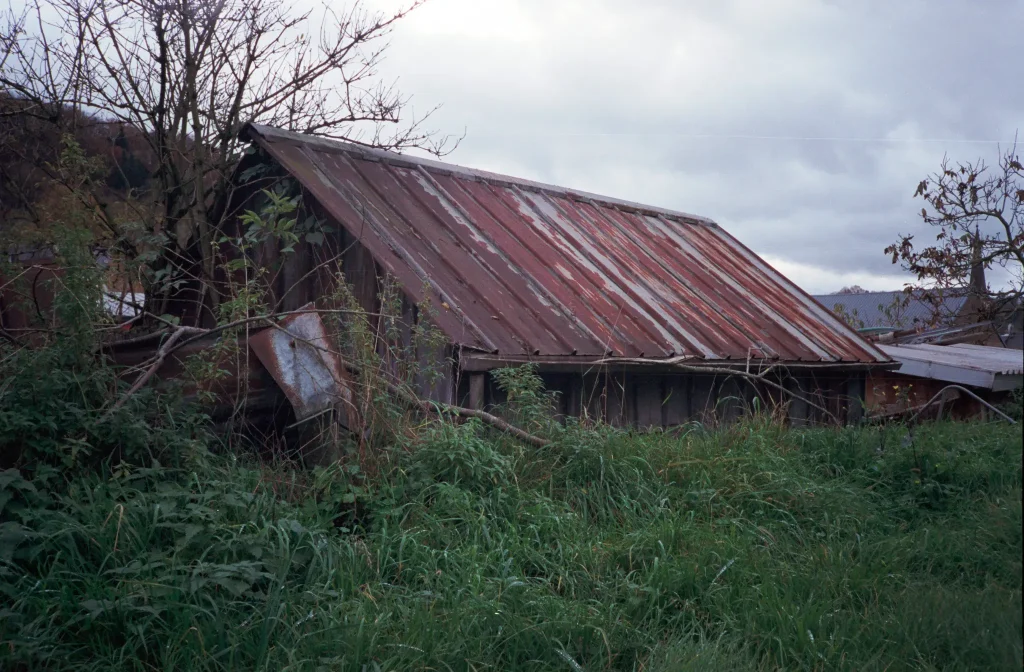
‘The Wheel’ with some tweaking in Lightroom, the lab version
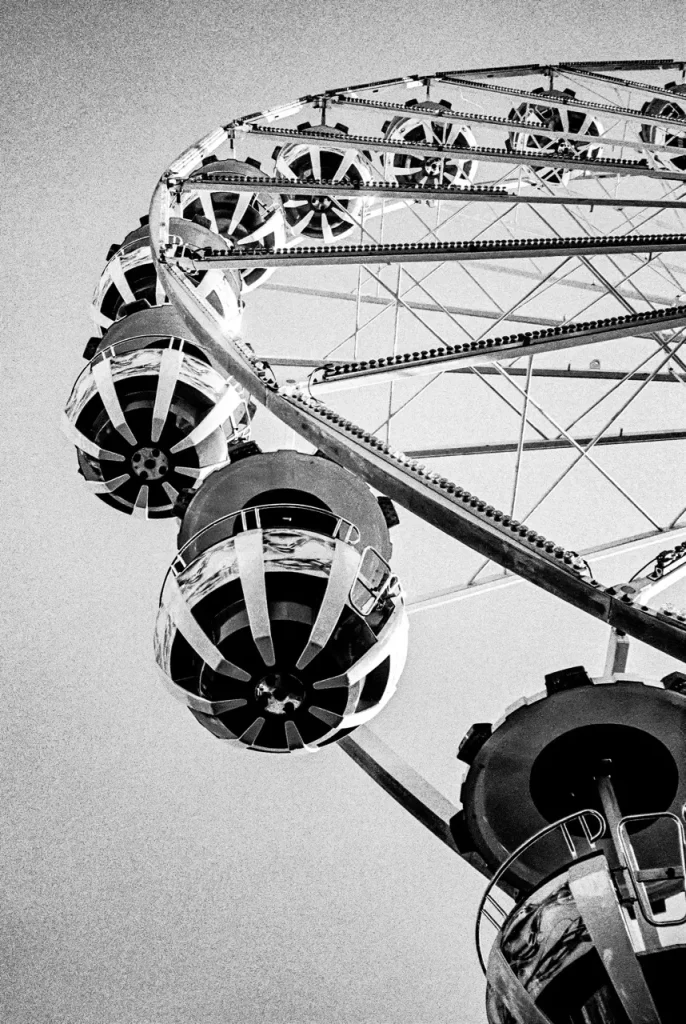
And Plustek’s take on this view – finer grained (or no sharpening artefacts which in my view were very present in all my lab scans) and nice tonality.
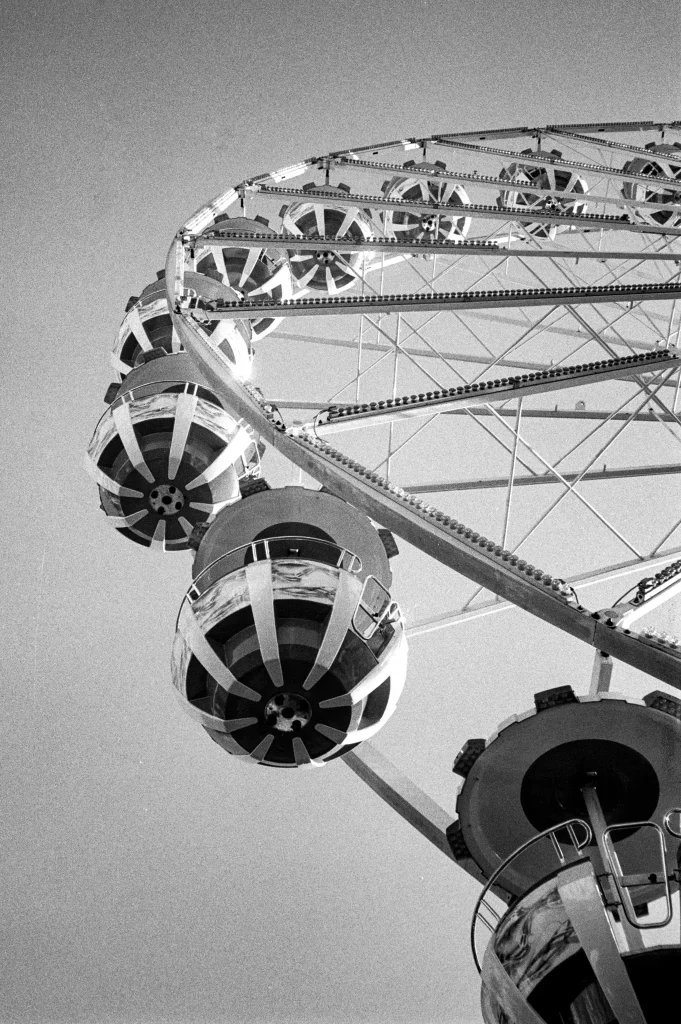
‘Them tourists’, heavily ‘Moriyamatized’ in LR – scan from the lab
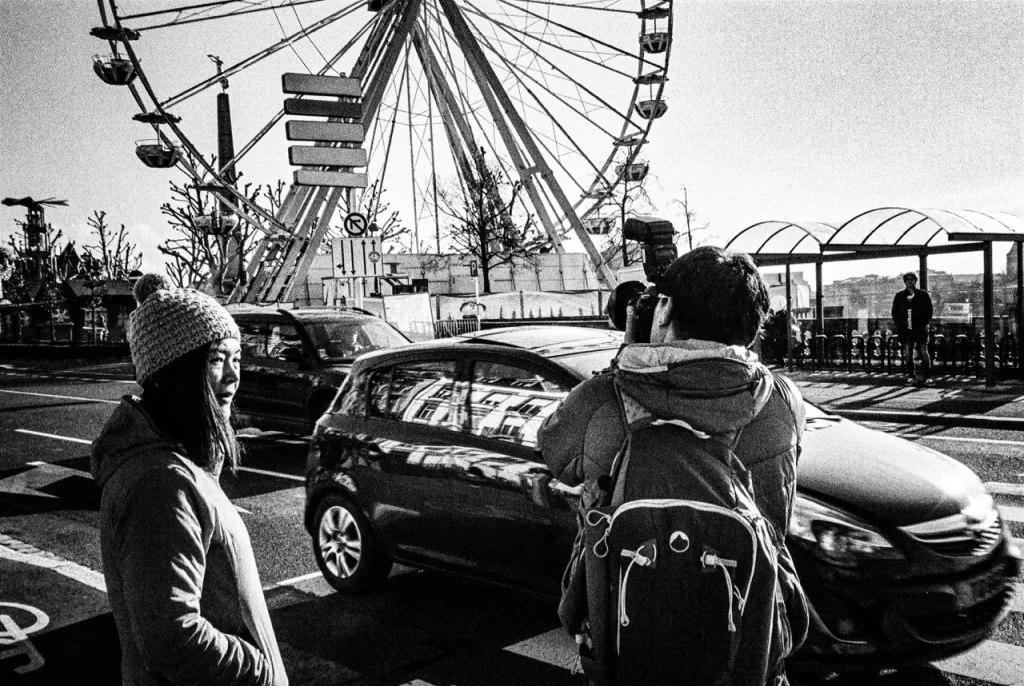
And from my scanner, I like it!
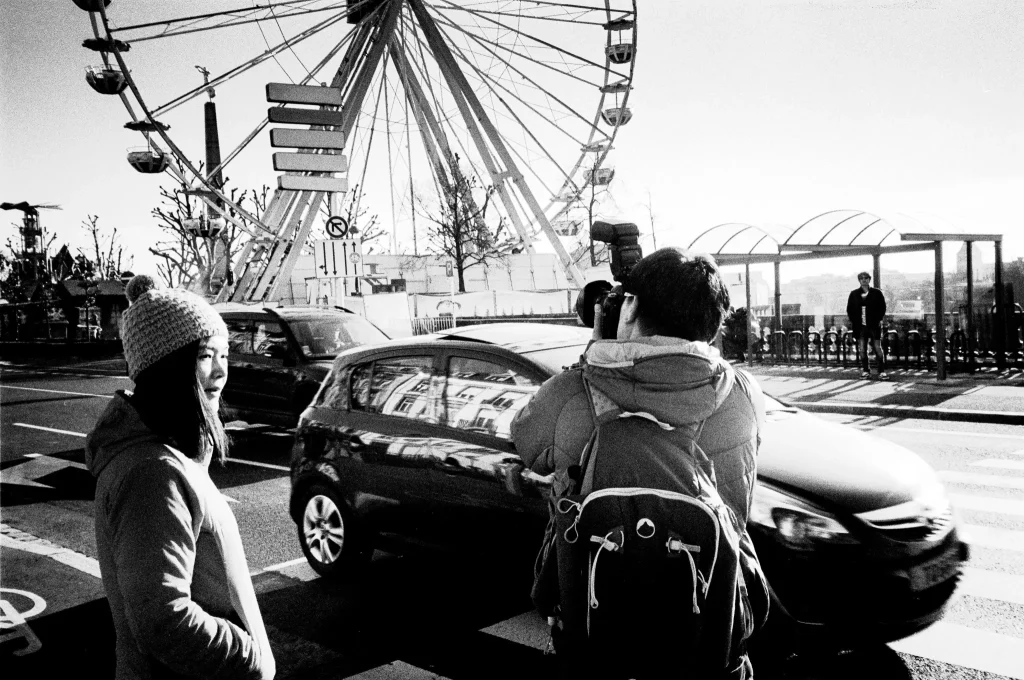
‘Café’ from the lab….
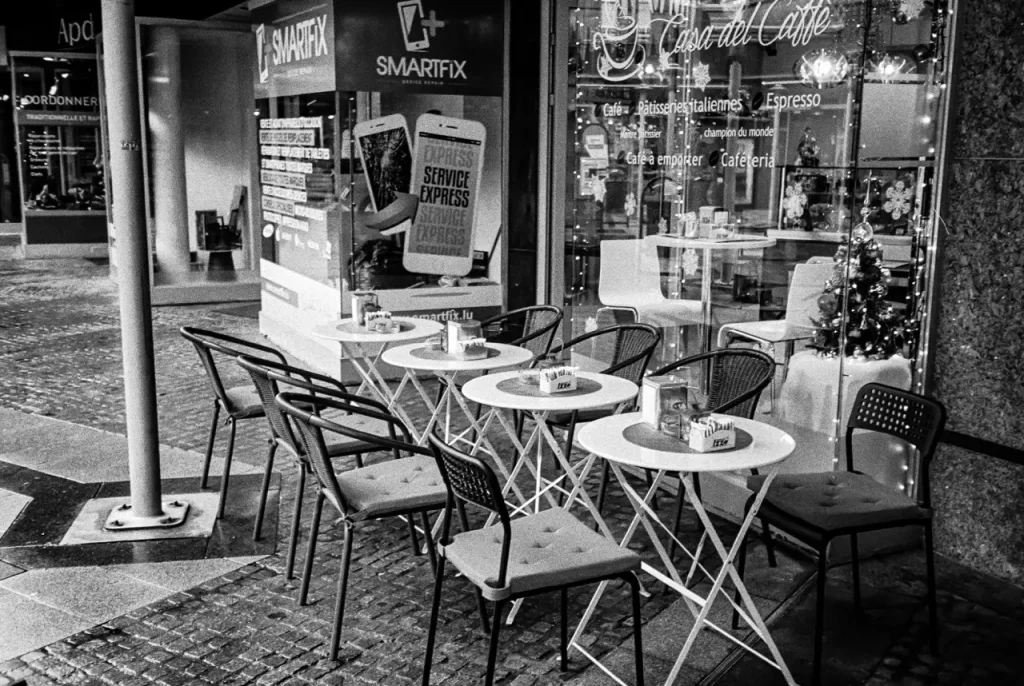
And the Opticfilm version… not much to say, the scanner did well.
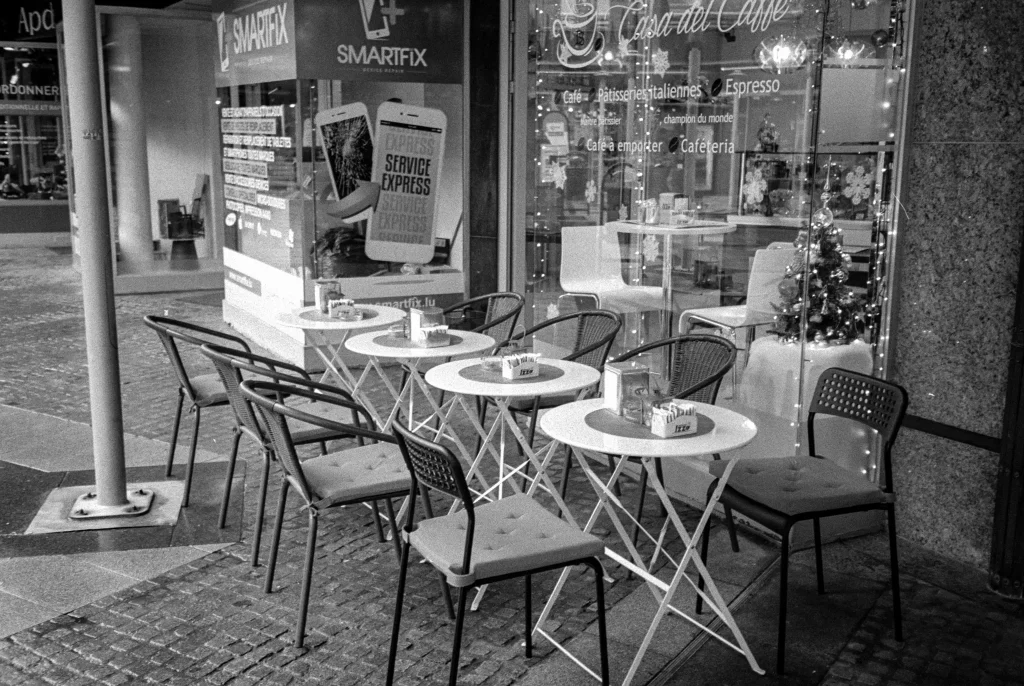
And last but not least, here’s a trio of scans from the lab, the Plustek and the Canoscan 9000F MkII flatbed scanner. The Canoscan is clearly last – lacks resolution, sharpness….. I think for the same price as the Canoscan, the Plustek is very very close to the lab scan.
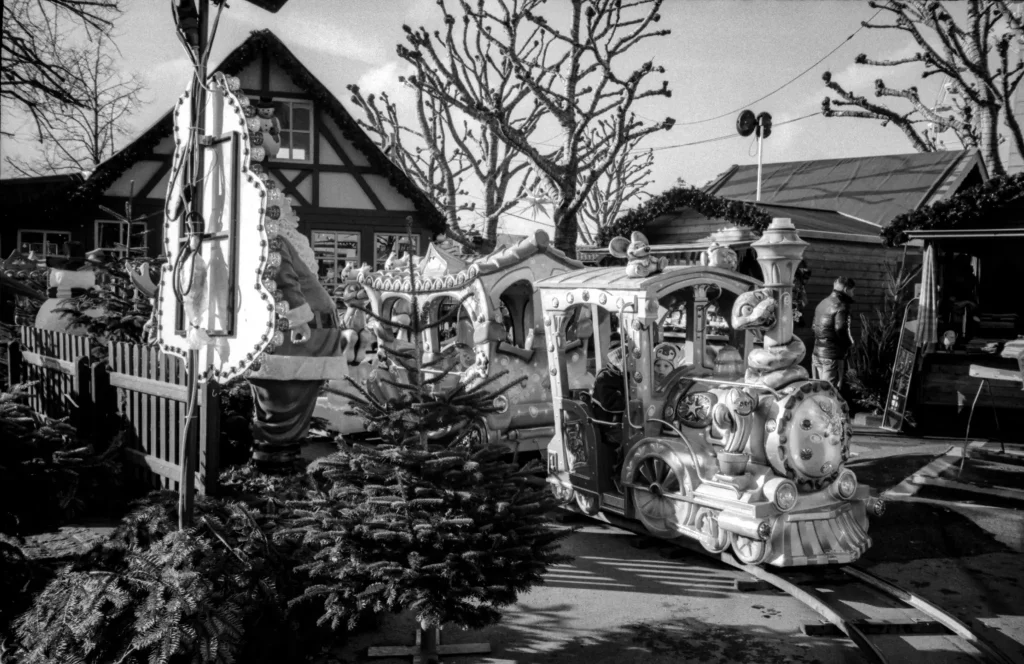
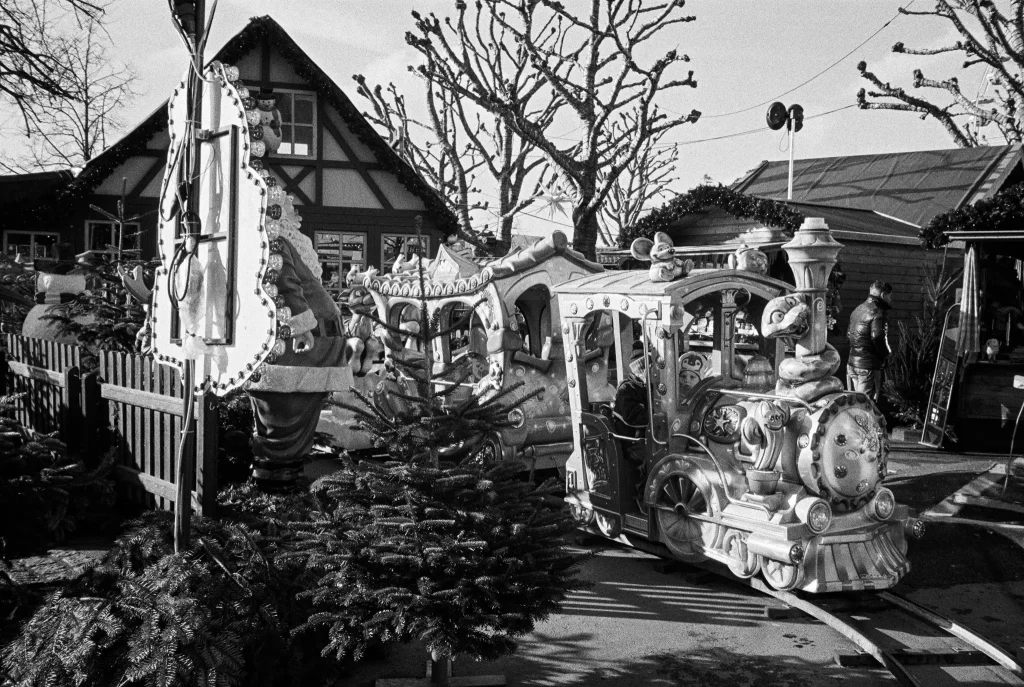
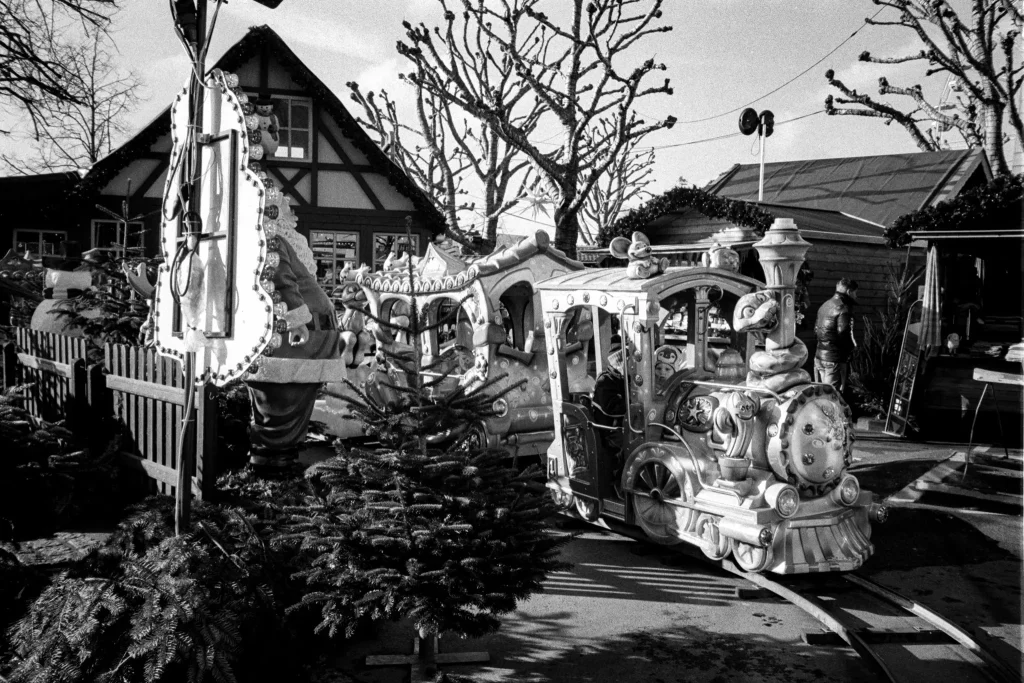
For me, this is clearly a point in favour of home scanning. For the cost of having a mix of about 12 color negative and B&W film developed and scanned (215€), I get a very capable scanner. In about 4 months, the scanner will have earned it’s keep. And time, well I’ll take my time to scan and I’ll force myself to enjoy it.
Thanks to KJ for bringing me back on track!
UPDATE 15.05.2016:
I scanned a frame made with my ‘new’ Leica IIIa and it’s great Summitar lens on both Vuescan and Silverfast – applied exactly the same development settings in Lightroom (just slight clarity and sharpening) to both files. I think the Vuescan version succeeds in getting MUCH more details out of the highlights – see the blanket and plate – than Silverfast. The shadows and overall contrast are much nicer! So to hell with Silverfast!
Only thing is, Silverfast produces a TIF of under 9 Mb and Vuescan weighs in at 34 Mb….. but disk space is cheap, no?
Here’s the Silverfast version:
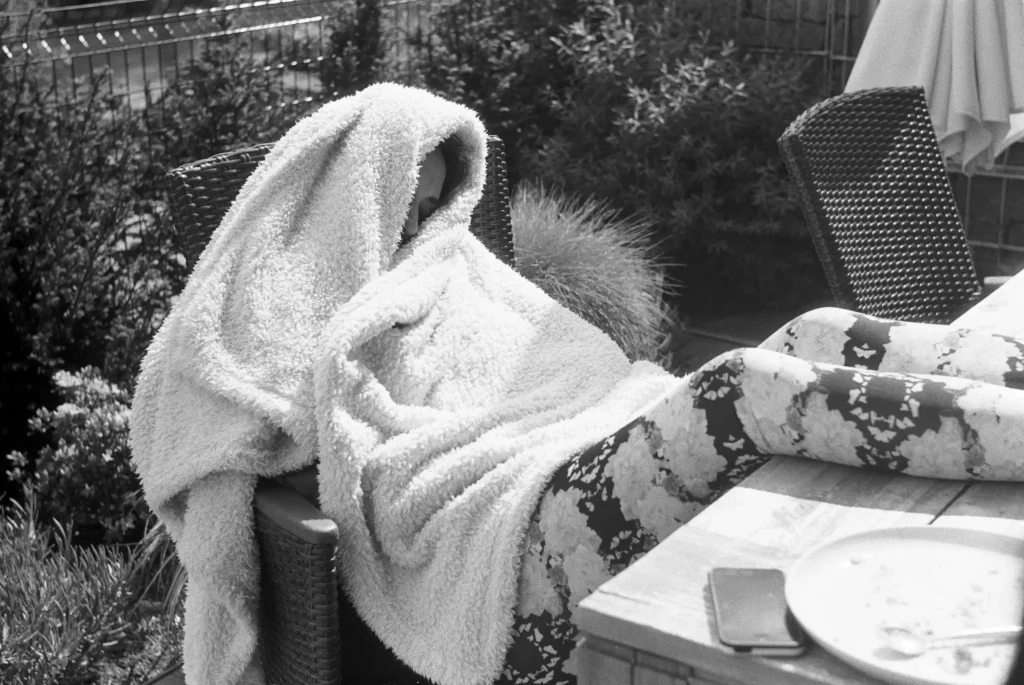
Here’s the Vuescan version:
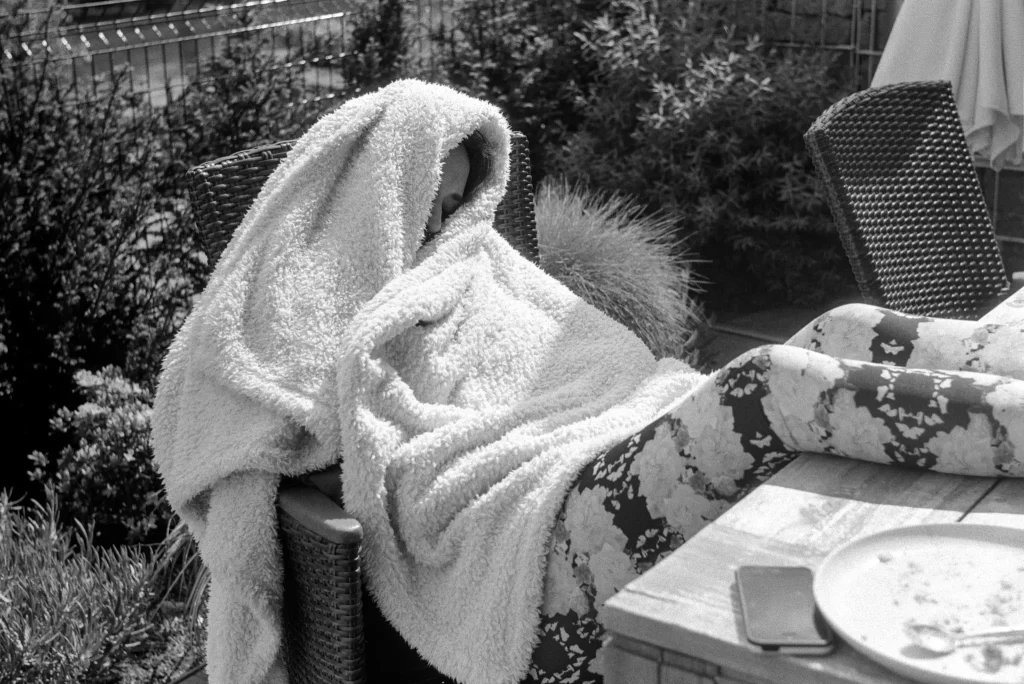
Share this post:
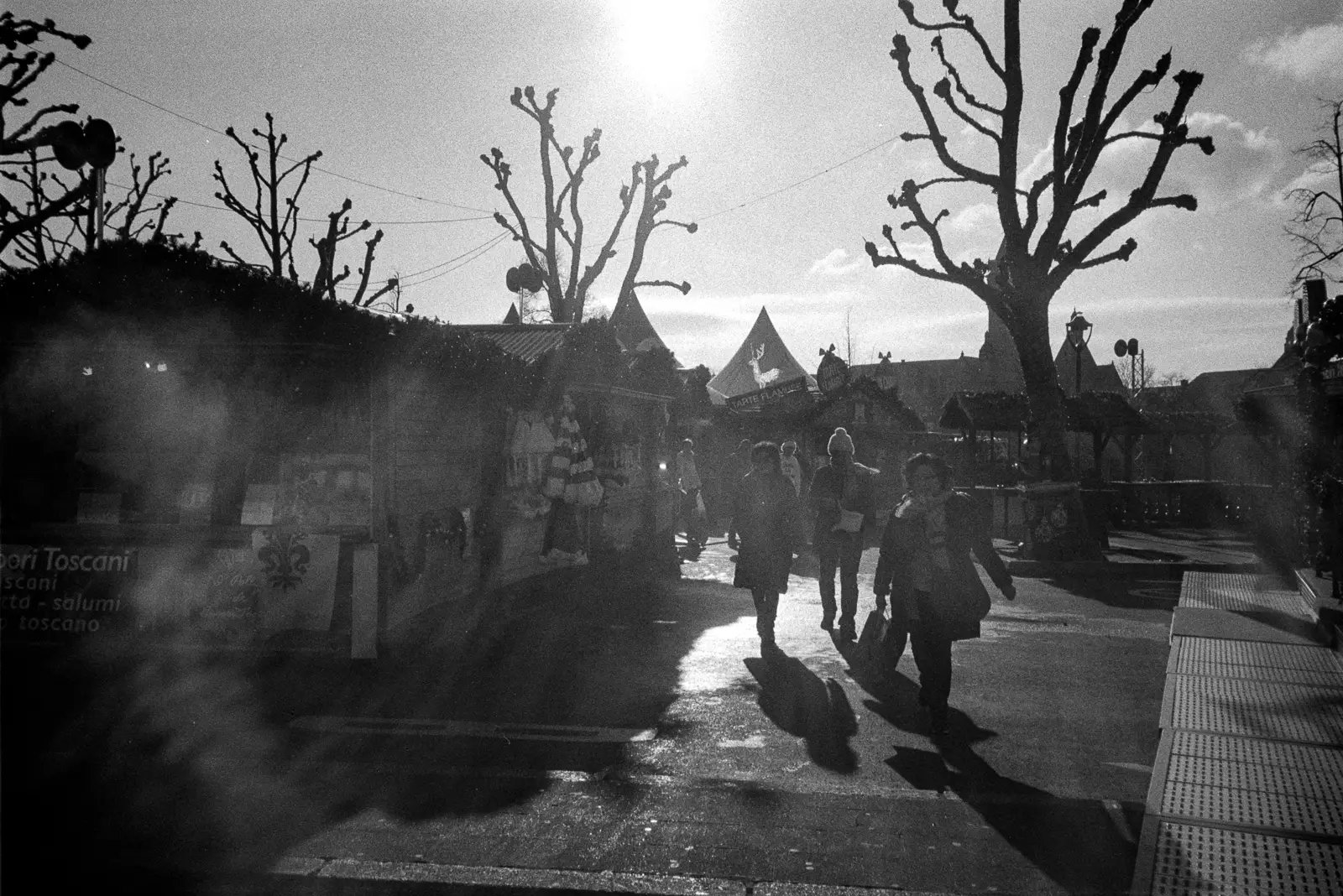








Comments
Martin Smith on Finding the value in home scanning – Guest post by Frank Lehnen
Comment posted: 11/05/2016
Comment posted: 11/05/2016
Comment posted: 11/05/2016
Bruce Gill on Finding the value in home scanning – Guest post by Frank Lehnen
Comment posted: 11/05/2016
Home scans are looking good to me! I've got the 8200 sitting here, looking at me and saying "told you so!" & "stop being bloody lazy and scan some negs!"
Thanks for the info :) Off home shortly to get scanning......
Comment posted: 11/05/2016
Comment posted: 11/05/2016
Comment posted: 11/05/2016
Terry B on Finding the value in home scanning – Guest post by Frank Lehnen
Comment posted: 11/05/2016
We need to take into account that we all don't necessarily see colour or hue in image the same, and our pc monitors definitely won't be set up identically, so keep this in mind reading my comments if you find they don't accord with your perceptions; this is something I'd expect.
I find the images of the graffiti fence very revealing and to my eyes, the plain Plustek is preferred. The lab seems to have slightly too much green, IMO, and the Silverfast is, well, just plain dull and uninspiring and with a strong magenta cast. Score 1 to Plustek.
The lab scan of the barn is has more vibrancy than the Plustek, but has produced magenta clouds, where the Plustek reveals them to be blue and does look more natural. The Silverfast version just appears flat and dull and without the contrast of the other two, and by the time you get to this scan, have you noticed a horizontal scratch can now be seen in the sky. Score I more for Plustek.
There is clearly more contrast in the lab scan of the wheel, hence the grain is more noticeable, but I find the Plustek far preferable here in its overall imaging result. Score yet another 1 to Plustek. (You can see where this is going, can't you?)
Well, no, not exactly, as I now prefer the higher contrast for the cafe shot. Nothing actually wrong with the Plustek result, just that for the subject matter, I like the higher contrast in the lab scan. And I feel that the lab's higher contrast also works better for the street scene at the base of the wheel. It definitely is showing up more detail. So. let's call it a draw.
Oddly. as regards contrast, the lab scan seems to exhibit marginally less than the Plustek in the Christmas Market scene and now I find myself preferring the lab scan! This just goes to show how difficult it is doing this sort of comparison.
The Canon 9000F Mk II scan is poor in comparison. But I am going to come to the defence of Canon flatbed scanners, as I use two: the Mk 1 (original version) of the 9000F and an older, but IMO, a far better 9900F. The issue with them both is that neither excels with 35mm format scans, where no matter what I try, the scans always seem to come out soft even though detail can still be seen. But move up to roll film, or 5x4 with the 9900F, and for some inexplicable reason they transform themselves into superb performers for a flatbed. So, I'm not at all surprised with the Canon result you post here.
Thanks for a very good comparative article.
Comment posted: 11/05/2016
Comment posted: 11/05/2016
jeremy north on Finding the value in home scanning – Guest post by Frank Lehnen
Comment posted: 11/05/2016
I was so glad to read your revised opinion on scanning. I use Epson Scan application. Silverfast is ok but they suck at updating it to work with later Mac OS. Why are they surprised that a Mac user would need that??
Your scans show that the DIY approach is the way to go unless time and convenience is a premium. If the latter is the case, then we'd not be shooting film!!
Comment posted: 11/05/2016
Steve on Finding the value in home scanning – Guest post by Frank Lehnen
Comment posted: 11/05/2016
Comment posted: 11/05/2016
Aukje on Finding the value in home scanning – Guest post by Frank Lehnen
Comment posted: 12/05/2016
Comment posted: 12/05/2016
Comment posted: 12/05/2016
Comment posted: 12/05/2016
Comment posted: 12/05/2016
Comment posted: 12/05/2016
Comment posted: 12/05/2016
Aukje on Finding the value in home scanning – Guest post by Frank Lehnen
Comment posted: 12/05/2016
Comment posted: 12/05/2016
KJ Vogelius on Finding the value in home scanning – Guest post by Frank Lehnen
Comment posted: 12/05/2016
Very informative comparison too. Nicely done! Matches my experience in that the lab scans look pretty appealing at first glance but lack some subtlety and flexibility. Of the Plustek scans I mostly prefer the Vuescan ones actually.
I'm curious; did you use the Negafix profiles in Silverfast? I just scanned my first full colour roll (also Superia 400) with the Plustek the other day and I'm leaning towards maybe the generic profile being a better starting point for that film.
Comment posted: 12/05/2016
Mads Jaeger on Finding the value in home scanning – Guest post by Frank Lehnen
Comment posted: 13/05/2016
Grace on Finding the value in home scanning – Guest post by Frank Lehnen
Comment posted: 14/05/2016
Using any of the labs near me will charge about 6 euros to scan a roll. That's 5mpx jpeg, with no editing; and burned to CD. In other words, useless and expensive. About the largest from-digital print I've done from it so far is an 8x12, but that came out beautifully despite my 1990's scanner and the extravagant expense of a roll of Agfaphoto Vista 200. (Fujicolor C200)
Sure, my time is worth more than 6 euro's an hour... but my photos are also worth more than the quality that their scanners output. That in itself, is enough to justify my effort.
Comment posted: 14/05/2016
Frank Lehnen on Finding the value in home scanning – Guest post by Frank Lehnen
Comment posted: 15/05/2016
At least for B&W.
Comment posted: 15/05/2016
Comment posted: 15/05/2016
Terry B on Finding the value in home scanning – Guest post by Frank Lehnen
Comment posted: 01/06/2016
http://www.imaging-resource.com/SCAN/V600/V600.HTM#sho
Comment posted: 01/06/2016
Reflections on a Reflecta RPS 10M - review by Frank Lehnen -35mmc.com on Finding the value in home scanning – Guest post by Frank Lehnen
Comment posted: 14/01/2017
JC on Finding the value in home scanning – Guest post by Frank Lehnen
Comment posted: 16/03/2017
Comment posted: 16/03/2017
Frank Lehnen on Finding the value in home scanning – Guest post by Frank Lehnen
Comment posted: 16/03/2017
As good as it is for b&w, it simply is very hard to get good color out of it. For color scans with my Plustek 8100 I vastly prefer Silverfast, though it's a nightmare to get used to. When I set the right film in the Negafix-module of Silverfast, the colours are quite OK right out of the scanner. I just use a bit of Unsharp Mask right in Silverfast and the results are good to go. Perhaps just a bit of tweaking in Lightroom is all it takes.
But then I am not a great fan of color film....
Anyways, give Silverfast a try, spend some time with it to learn it's basics and get back to me with your results!
I hated that piece of software before, but I am coming slowly to like it and to prefer it to Vuescan...
Comment posted: 16/03/2017
Comment posted: 16/03/2017
Comment posted: 16/03/2017
Comment posted: 16/03/2017
Comment posted: 16/03/2017
William on Finding the value in home scanning – Guest post by Frank Lehnen
Comment posted: 25/05/2019